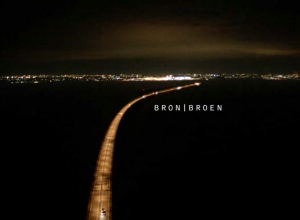The transformation reality program is one that has become increasingly popular over the last couple of decades. While it showcases the real lives of people, which is a distinctive factor of the reality tv genre, it also incorporates the emotional and dramatic element of the ‘reveal’ which stems from scripted shows such as the soap opera. However, unlike the docu-soap, which used observationalist footage edited together to form a dramatic narrative, the transformation program features the ‘makeover’, which shifts the focus of the reality program from drama and conflict to self improvement and education.
It’s all about the self. While a transformation show may appear to be about the makeover of the certain thing being showcased in the program (be it a person, house, garden, business, pet, job or relationship), it appeals on the whole to the viewer in the context of their own lives. By watching other people improve their lives over the course of an episode or season, and to have the end results shown in the dramatic ‘reveal’, the individual audience member is given a set of choices and options on how they can better themselves in a similar way to achieve the same results. It becomes a form of “social observation” whereby “social issues [are reduced] to questions of individual lifestyle choice” (Lewis, 2009).
So what is lifestyle? Annamarie Jagose describes it as a “promiscuous concept” that can be seen as “an accretion of personal style achieved primarily through consumption” (2003). The transformation program aims to instruct and educate its audience on what choices they can make to improve their lifestyle, not just concerning themselves with how to act but who to be, as “lifestyle concerns the very core of self- identity, its making and remaking” (Giddens, 1991).
So where do the angry teens come into the picture? World’s Strictest Parents is a show that educates both the children and the parents and becomes a learning experience to improve the lifestyle of an entire family. In the episode screened in the lecture, rebellious teens Corie and Thea are sent to live in Texas with ex-military dad Laval and they learn the hard way that slacking off does not help them in their lives. The episode begins with the teens living at home with their families and demonstrates exactly what is going on in their lives that led them to participate in the show. We see the kids yell at or ignore their parents, stay out late, skip school and even watch as Corie is taken to the hospital for substance overdose. The audience is given pretty clear description of how not to act as a parent as it can be seen that these poor mothers literally have no control over their children.
The episode then moves to America as the kids move in with their new Texan family and are forced to work hard and be polite in order to keep certain privileges such as a phone or clothes. The ‘transformation’ comes first when watching Corie break down during boot camp after skipping school. The boy realises he has been acting stupidly and doesn’t want to be that kind of person anymore. From that point on he has changed entirely and the emotional exchange between him and his mum when he returns home is perfect evidence of the benefits of his new life choices.
Often the reality makeover program operates on a purely commercial basis. They emphasise a stable and preferred way of life within a community that is “strongly oriented toward [specific] consumer choices and leisure patterns” (Chaney, n.d), encouraging the audience member to purchase certain items that will better themselves and their lives in the ways of the respectable community which has been shown in the program. And although shows like World’s Strictest Parents do not promote commercialism in the same manner, it still acts to influence the viewer to act in a certain way in accordance to given ideals of the society portrayed in the show. Thus the transformation reality show not only transform the contestant or subject of the show but aims to transform the viewers and, in turn, society itself.
– T.Lewis, 2009, TV Transformations: Revealing the Makeover
– A, Jagose, 2003, ‘The Invention of Lifestyle’ in Interpreting Everyday Culture, ed. F.Martin
– A, Giddens 1991, quoted in Jagose
– D C. Chaney n.d, ‘From Ways of Life to Lifestyle’

 version of the world, allowing viewers to feel as if they are a part of a certain place without having ever been here. I can relate to this from personal experience. Until July of 2012, I had never been to the United States. However, from all the television that I watched, I felt as if I lived there myself, knew the various cities and landmarks like my own neighbourhood. But upon arriving in New York, i realised this was not the case. While I did recognise various things like Times Square or the Statue of Liberty, they were different to how I had imagined, different to what I had seen on the television (The Statue of liberty, for example, was a lot smaller than I had thought) and this made me realise that the things we see and the places we feel we are a part of on a television show are just that, a television show. But is that the sole reason why we watch international television, to experience new places?
version of the world, allowing viewers to feel as if they are a part of a certain place without having ever been here. I can relate to this from personal experience. Until July of 2012, I had never been to the United States. However, from all the television that I watched, I felt as if I lived there myself, knew the various cities and landmarks like my own neighbourhood. But upon arriving in New York, i realised this was not the case. While I did recognise various things like Times Square or the Statue of Liberty, they were different to how I had imagined, different to what I had seen on the television (The Statue of liberty, for example, was a lot smaller than I had thought) and this made me realise that the things we see and the places we feel we are a part of on a television show are just that, a television show. But is that the sole reason why we watch international television, to experience new places?
